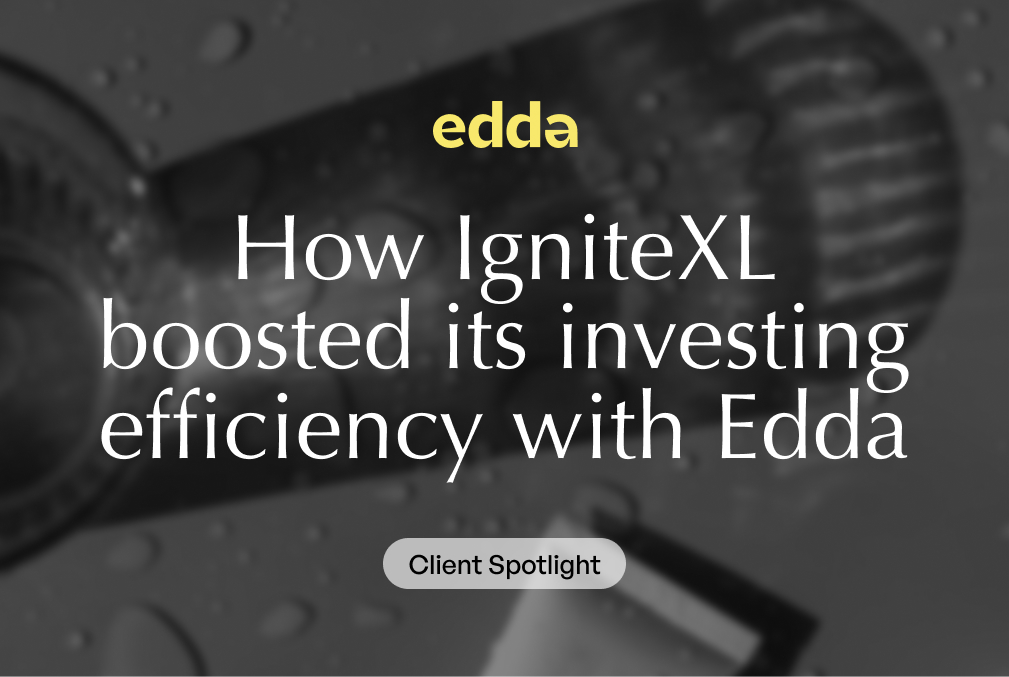When startups seek funding, due diligence is the critical step where dreams meet scrutiny. More than a routine checkpoint, it’s where potential investments are thoroughly vetted for viability, risk, and opportunity.
For founders, due diligence is their moment to clearly articulate their business vision, demonstrate the strength of their operations, and prove their market potential. For investors, it’s the time to dig deep, going beyond the surface to examine a potential portfolio company’s financials, legal issues, and strategic positioning.
Both parties stand to gain from well-conducted due diligence—founders can secure the capital and strategic support they need, while investors can confirm they’re placing their bets wisely. The effectiveness of this process can mean the difference between securing investment or going back to the drawing board.
In this guide, we’ll explore the essentials of due diligence and provide a VC diligence checklist to ensure that investors approach this phase with confidence and clear expectations. Feeling overwhelmed by the due diligence process? Discover how Edda’s venture capital management software can help.
What is Due Diligence in Venture Capital?
Due diligence is a deep dive into a startup’s business, where investors verify everything from financials to business plans to uncover potential risks before committing to an investment. Think of it as a comprehensive health check for businesses, where no stone is left unturned.
For early-stage startups, due diligence is focused more on the team and the market potential. Since extensive financial data or customer metrics might not be available yet, investors look at the founders’ backgrounds, the innovativeness of the idea, and whether there’s a market demand for the proposed solution.
For later-stage startups, the due diligence process becomes more granular. Investors scrutinize audited financial statements, customer acquisition costs, lifetime value of customers, and other metrics that show the business’s performance over time. Leadership’s ability to execute the business plan and scale the company also comes under the microscope.
Venture Capital Due Diligence Checklist
Due diligence is your shield as an investor, helping you deeply explore both the risks and opportunities of any potential investment. Here’s a comprehensive checklist to steer you through the critical evaluation points:
Financial Due Diligence
Financial due diligence is a deep dive into a company’s financial records to uncover risks and confirm its stability before investing. It will help you ensure documentation accuracy and identify any potential red flags.
1. Examine Historical Financials
Thoroughly examine the startup’s past financial statements—income statements, balance sheets, and cash flows—to understand its financial health, operational efficiency, and growth potential.
Focus on assessing revenue growth, profit margins, asset management, and cash flow patterns to gauge profitability and stability. Analyzing historical data helps identify trends and informs decisions about the startup’s financial viability and prospects for expansion.
🔺Red Flag: Inconsistent Financials
Discrepancies or irregularities in financial statements are major red flags. These can indicate poor management practices or even fraudulent activity. Be wary of mismatched figures, unexplained variances, or inconsistent reporting methods. These issues could compromise the accuracy of financial health assessments and impact investment decisions.
The Theranos scandal is a stark warning about the dangers of neglecting thorough financial due diligence. Attracted by claims of revolutionary technology, investors poured money into Theranos, only to see the company crumble due to undisclosed financial irregularities and outright deceptions.
2. Analyze Financial Projections
When analyzing financial forecasts, scrutinize assumptions about revenue growth, expenses, and market conditions for realism. Always validate market research methodologies and data sources to ensure accuracy. Conduct scenario analysis to test forecasts’ sensitivity to variable changes for resilience against market fluctuations.
🔺Red Flag: Unrealistic Projections
Overly optimistic financial forecasts that lack credible assumptions or supporting evidence can signal that the startup may not fully understand the market dynamics or their own operational capabilities. This can lead to future financial instability and missed targets. Watch for exaggerated growth rates, underestimations of expenses, and overly favorable market conditions in the projections.
WeWork’s dramatic downfall shows the perils of accepting overly optimistic financial projections. Once valued at $47 billion, the company’s aggressive growth forecasts overlooked real market limits and operational costs, leading to a disastrous IPO withdrawal and a drastic valuation plummet.
3. Assess Cash Flow Management
Evaluate how the startup manages its cash flow by examining their burn rate and financial runway. Project future cash flows based on current spending patterns and anticipated revenue to anticipate any potential cash flow gaps. Assess how effectively the startup manages working capital, including receivables, payables, and inventory turnover, to maintain liquidity and operational stability.
🔺Red Flag: Inadequate Cash Flow Management
A high burn rate or insufficient runway indicates that the startup may struggle to sustain its operations long-term without securing additional funding, which could lead to financial instability and jeopardize the investment.
Pets.com’s rapid unraveling demonstrates the dangers of ignoring cash flow management. Caught up in the dot-com era’s exuberance, the company quickly burned through its capital with aggressive marketing, only to collapse as swiftly as it rose.
Legal Due Diligence
Legal due diligence is a review of a company’s legal standing to protect investments from potential risks and liabilities. It ensures all corporate documents and contracts are in order, preventing legal pitfalls down the road.
1. Review Corporate Documents
Check incorporation documents, past investment agreements, and shareholder structure to avoid legal ambiguities impacting investments. Verify articles of incorporation and bylaws for compliance, examine past investment agreements to understand obligations, and assess the shareholder structure for potential conflicts affecting governance or investment outcomes.
🔺Red Flag: Incomplete Corporate Documentation
Gaps in incorporation papers, shareholder agreements, or investment documents can lead to legal complications that jeopardize investment security, creating risks related to ownership disputes, compliance issues, and governance challenges.
The Enron scandal powerfully demonstrates the hazards of overlooking corporate documentation. This energy giant manipulated its financials and obscured key details in corporate documents, leading investors to believe in its stability and profitability. The gaps in shareholder agreements and undisclosed off-the-books activities eventually unraveled, precipitating one of the largest bankruptcies in history.
2. Examine Contracts & Agreements
Analyze key contracts with customers, suppliers, and partners to identify potential liabilities, dependencies, and risks. This involves reviewing customer contracts to understand revenue streams and assess risks such as payment terms and termination clauses.
Supplier agreements should be analyzed to evaluate dependencies, pricing terms, and potential supply chain risks. Additionally, evaluate partner contracts to uncover legal obligations, exclusivity agreements, and risks associated with joint ventures or alliances.
🔺Red Flag: Contractual Liabilities
Poorly structured agreements with customers, suppliers, or partners can expose the company to massive risks and legal entanglements, potentially leading to financial losses and operational disruptions. Ensure all contracts are clear, enforceable, and aligned with the company’s long-term strategy.
SunEdison’s dramatic downfall reflects the dangers of overlooking contract details. This renewable energy behemoth became ensnared in a maze of problematic agreements that escalated debts and led to fierce legal struggles, culminating in bankruptcy.
3. Check Compliance & Litigation
Check compliance and litigation to ensure adherence to relevant laws and regulations. Assess regulatory compliance across operations, including industry-specific regulations and licensing requirements.
Review the startup’s legal history to uncover any ongoing or past litigation that could pose legal liabilities, financial impacts, or reputational risks. Develop strategies to mitigate compliance risks and potential litigation exposure, like implementing legal safeguards and contingency plans to address escalating legal issues effectively.
🔺Red Flag: Compliance Issues & Litigation
Non-compliance with regulations or ongoing legal disputes can drain resources and pose severe reputational risks, potentially undermining the company’s stability and investor confidence. Ensure all compliance measures are met, and any legal issues are transparently disclosed and managed.
Volkswagen’s emissions scandal exemplifies the repercussions of non-compliance and litigation. When it surfaced that Volkswagen had rigged diesel engines to cheat on emissions tests, the fallout was immediate and severe. This breach of environmental regulations triggered a slew of global lawsuits and cost billions in fines, tarnishing the automaker’s reputation and jeopardizing its market position.
Market & Competitive Landscape Analysis
Market and competitive landscape analysis assesses the business environment to determine a startup’s potential for success. This evaluation identifies market trends, competitive threats, and opportunities, providing a clear picture of where the company stands in its industry.
1. Evaluate Market Size & Growth
Assess the startup’s market potential by analyzing the total addressable market (TAM) and segmenting it to determine potential market share. Evaluate market trends, competitive landscape, and forecasted growth rates to gauge the startup’s growth prospects within its target market. Validate assumptions about market size and growth using reliable market research, industry reports, and expert opinions to ensure realistic projections.
🔺Red Flag: Limited Market Understanding
A lack of thorough research or understanding of the market size, growth potential, and customer demand can jeopardize the business’s success, indicating that the startup may struggle to capture and sustain market share, leading to potential failure despite initial investments.
The spectacular collapse of Quibi is a stark reminder of the consequences of misjudging market demand. Despite raising $1.75 billion based on the promise of revolutionizing short-form streaming for mobile users, Quibi shuttered just six months after launch. The platform failed to understand the competitive landscape and user preferences, significantly overestimating the demand for its service amidst already established streaming giants.
2. Analyze Competitive Position
Analyze competitive position by conducting a comprehensive analysis of competitors to understand their strengths, weaknesses, market share, and strategies. Evaluate the startup’s unique selling points, differentiation factors, and competitive advantages compared to other players in the market.
Benchmark the startup’s offerings, pricing, customer feedback, and market positioning against direct and indirect competitors to identify areas of competitive advantage and improvement.
🔺Red Flag: Competitive Disadvantages
Lacking a clear competitive edge or a unique proposition is a significant red flag. If the startup operates in a highly competitive market without distinguishing itself, it may struggle to sustain growth and attract customers, ultimately impacting its long-term viability and profitability.
As Netflix introduced streaming services, Blockbuster failed to adapt, clinging to its outdated rental model without a distinct competitive advantage. This oversight allowed Netflix to capture the market, leading to Blockbuster’s bankruptcy.
Team Evaluation
Team Evaluation scrutinizes the backgrounds, skills, and dynamics of a startup’s leadership and staff to gauge their potential to execute the business plan effectively. This process ensures that the team’s capabilities align with the company’s strategic goals and growth projections.
1. Assess Founder & Team Capability
Assess the capability of the founder and team by investigating their backgrounds, previous ventures, roles, successes, and failures to gauge entrepreneurial experience and leadership qualities.
Evaluate the skills, expertise, and diversity within the startup’s core team to determine their capability to execute business strategies effectively. Additionally, assess the founders’ alignment with the startup’s vision, commitment to growth, and ability to adapt in dynamic business environments.
🔺Red Flag: Founder & Team Issues
Inadequacies in the founders’ experience or skills, poor leadership, or dysfunctional team dynamics are critical red flags. These issues can severely impact the startup’s ability to effectively execute its business plan and achieve growth, leading to operational challenges and reduced investor confidence.
The rise and fall of Elizabeth Holmes and Theranos serve as a cautionary tale about the importance of vetting a startup’s leadership. Despite Holmes’ charisma and bold promises, her lack of experience in biotechnology and deceptive practices ultimately led to the company’s demise.
2. Culture & Fit
Evaluate whether the startup’s culture aligns with your investment philosophy by assessing its values, work environment, and organizational norms. Gauge team dynamics, collaboration, communication, and goal alignment among team members to predict cohesive execution potential. Ensure the startup’s culture complements your firm’s values, goals, and strategic focus for a harmonious partnership and mutual growth.
🔺Red Flag: Operational Inefficiencies
Operational inefficiencies, such as lack of clear strategies or poor execution, are major red flags. These issues suggest that the business might struggle to scale effectively, leading to potential growth barriers and reduced overall performance.
The implosion of Uber under former CEO Travis Kalanick underscores the critical importance of culture and fit. Despite rapid growth, Uber’s aggressive, cutthroat culture led to numerous scandals, regulatory battles, and high employee turnover, ultimately hampering its long-term prospects.
Technical Due Diligence (for tech startups)
Technical due diligence evaluates a tech startup’s software, hardware, and technical processes to ensure they meet industry standards and are scalable for future growth. This helps investors understand the technological foundation and innovation potential of the company.
1. Review Technology & Infrastructure
Assess the startup’s technology stack, architecture, and data security measures for scalability, reliability, and industry standards compatibility. Review the overall design and architecture of the technology infrastructure to ensure it supports current operations and future growth. Scrutinize data security measures and protocols to protect sensitive information and mitigate cybersecurity risks effectively.
🔺Red Flag: Outdated or Flawed Technology
Outdated or flawed technology is a major red flag. If the technology is not up to current standards or has significant issues, it may require substantial investment to fix or risk becoming obsolete, potentially hindering the startup’s ability to compete and scale effectively.
Once a leader in mobile communications, Blackberry failed to update its technology stack and infrastructure in response to the rapidly evolving smartphone market dominated by Apple and Android. This technological stagnation led to a sharp decline in market share and relevance.
2. Evaluate Product Development Stage
Assess the startup’s product development stage to determine its readiness for scaling. Analyze the product’s current stage—concept, prototype, beta testing, or market-ready—to gauge preparedness.
Evaluate market fit by assessing how well the product meets customer needs and demand based on feedback and validation. Consider scalability potential, ensuring the product can handle increased demand and user growth while maintaining quality and performance standards.
🔺Red Flag: Intellectual Property Risks
Weaknesses in IP protection or potential infringements are significant red flags. These issues could compromise the startup’s competitive position and valuation, leading to legal battles and diminished market advantage. Ensuring strong IP protection is crucial for maintaining the startup’s innovation edge and investor confidence.
Despite raising significant capital, Juicero’s expensive juicing machine was not ready for market scaling and faced widespread ridicule for its limited functionality and high cost. Additionally, it lacked robust intellectual property protection, which allowed competitors to easily replicate the concept. This case emphasizes the necessity for investors to scrutinize a product’s development maturity and IP safeguards.
Exit Strategy & ROI Analysis
Exit Strategy and ROI Analysis assess the potential pathways for investment return, examining the startup’s exit strategies and forecasting the expected financial outcomes. This helps investors understand how and when they can expect to see a return on their investment.
1. Consider Exit Options
Evaluate potential exit strategies like IPOs, acquisitions, or other liquidity events based on strategic fit with the startup’s business model, market position, and growth trajectory. Analyze current market conditions and trends to assess the feasibility and timing of each strategy. Mitigate associated risks such as regulatory challenges, competitive landscape shifts, and market volatility to optimize the exit process.
🔺Red Flag: Limited Exit Options
A startup’s viability hinges on its ability to plan viable exit strategies such as IPOs, acquisitions, or other liquidity events. Without clear, realistic exit plans, potential returns on investment may be compromised.
The failure of Better Place highlights the dangers of limited exit options. Despite raising nearly a billion dollars to build a network of electric car charging stations, the startup lacked a viable path to profitability or an attractive exit strategy, such as an IPO or acquisition. When the business model failed to gain traction, investors were left with significant losses and no feasible way to recoup their investments
2. ROI Potential
Calculate the expected return on investment by thoroughly analyzing potential gains relative to the startup’s risk profile and the anticipated time frame for returns. Conduct a comprehensive financial analysis to determine expected ROI based on projected financial outcomes, considering both best-case and worst-case scenarios.
Factor in the startup’s risk profile to calculate a risk-adjusted return, accounting for uncertainties in market conditions, operational challenges, and competitive pressures. Align the anticipated time frame for returns with the startup’s growth stage and market conditions to ensure feasibility and alignment with investment objectives.
🔺Red Flag: ROI Miscalculations
Investors should guard against overestimating ROI without thorough consideration of risks and market conditions. Failing to account for these factors can result in financial disappointment, emphasizing the need for accurate and realistic projections to ensure informed investment decisions.
The downfall of Solyndra highlights the pitfalls of ROI miscalculations. Despite receiving over $500 million in federal loans, the solar company overestimated its ROI by failing to account for declining solar panel prices and intense market competition.
This miscalculation led to bankruptcy, leaving investors and taxpayers with substantial losses. This case underscores the importance of accurately assessing ROI potential, considering all risks and market conditions to avoid financial disappointment.
Navigating the VC Due Diligence Process
Effective due diligence is not just about checking off items on a list; it’s about actively engaging with the startup to understand its essence and potential. Here’s how you can navigate this process strategically:
Structure the Process
- Establish Clear Objectives: Begin with specific goals for what you want to learn about the startup. This helps keep the due diligence focused and efficient.
- Create a Timeline: Set a realistic timeline for completing the due diligence. This should include milestones for reviewing different aspects of the business and making decisions at each stage.
- Use Specialized Tools: Consider leveraging due diligence software or platforms that streamline data collection, analysis, and collaboration. This can significantly reduce the time and effort involved.
Engage with the Founders
- Conduct In-Depth Interviews: Have detailed discussions with the founders and key team members. This helps gauge their passion, competence, and honesty—qualities that are as important as the business metrics.
- Visit the Business: If possible, visit the startup’s facilities. Seeing the operation firsthand can provide invaluable insights that are not apparent in documents and presentations.
Analyze & Reflect
- Consult with Experts: Don’t hesitate to bring in legal, financial, or industry-specific experts to help review complex areas or validate the findings.
- Review Findings with Peers: Discussing the due diligence findings with trusted colleagues or mentors can provide new perspectives and help validate your conclusions.
Prepare for Multiple Outcomes
- Be Ready to Walk Away: If the due diligence uncovers deal breakers, be prepared to walk away from the investment. It’s crucial to maintain strict investment discipline.
- Negotiate Based on Findings: Use the insights gained during due diligence to negotiate investment terms that reflect the risk and potential identified.
Follow-Up & Final Decision
- Request Additional Information: If certain aspects are unclear, don’t hesitate to ask for more information. It’s important to resolve any doubts before finalizing the investment.
- Make an Informed Decision: Based on the comprehensive analysis and insights gained, decide whether to proceed with the investment, renegotiate terms, or decline the opportunity.
Streamline VC Due Diligence with Edda
Navigating the due diligence process can be intimidating, especially when the stakes are high. Whether you’re a seasoned investor or stepping into your first startup venture, having the right tools can make all the difference. Edda’s venture capital portfolio management software provides a powerful ally in this critical phase, offering comprehensive features that enhance visibility and streamline evaluations.
With Edda, you can accelerate your due diligence, tapping into advanced analytics and automated tools that uncover essential insights quickly and accurately. From evaluating financial health to scrutinizing team dynamics and verifying legal compliance, Edda equips you with the capabilities to probe deeper and uncover the full potential and pitfalls of any investment opportunity.
Trusted by over 100 investment firms and managing more than $135 billion in assets across 90 countries, Edda is proven to enhance the effectiveness and efficiency of investment strategies.
If you’re ready to boost your confidence and efficiency in due diligence, try Edda’s portfolio management venture capital tools today and see how it transforms your investment strategy with precision and ease.













